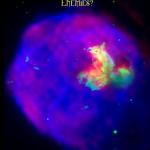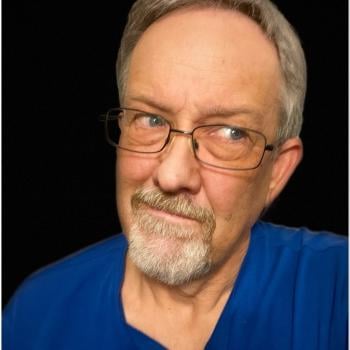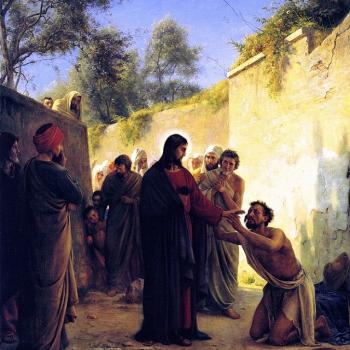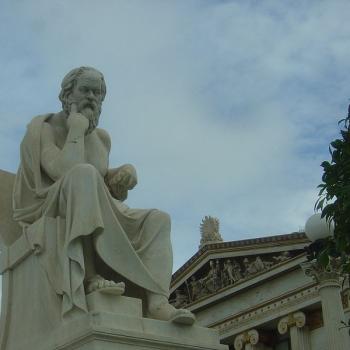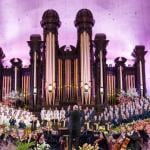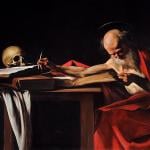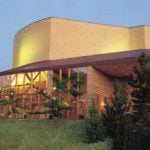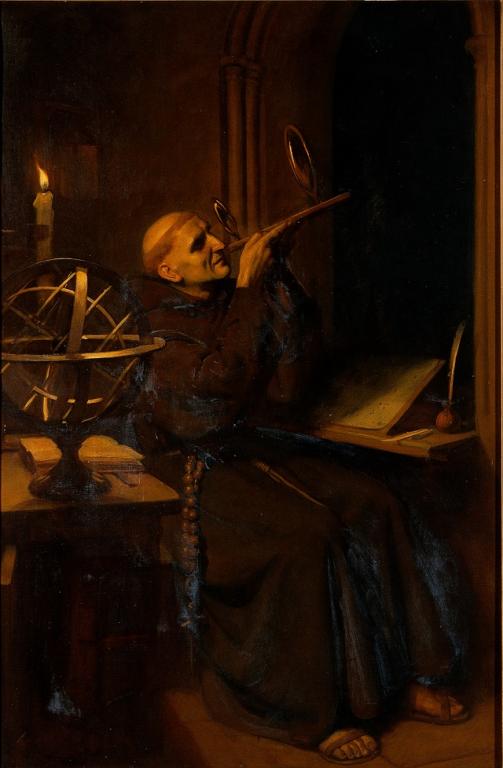
From my 2010 book, Science and Christianity: Close Partners or Mortal Enemies? (pp. 38-46). Follow the link for book and purchase information: available for as low as $2.99. I have not checked all the links. Some may be defunct after nine years. Generally, Amazon, Google Books, and Wikipedia links are pretty stable and unchanging.
[New Introduction] Many people (particularly atheists) seem to have this notion that the Catholic Church in the Middle Ages was hostile to empirical inquiry, the study of processes of the natural world, and science (such as it existed at all in those times), and even lacked intellectual curiosity about such matters. The “dark ages” (so we are told) was supposedly caused by Christianity (another huge and ridiculous myth). The historical truth is quite otherwise, as I shall show in this paper.
Catholics in the Middle Ages were as “scientific” as anyone else (if not much more so), and certainly we could find much error and folly among the pagan thinkers of this period: if anyone is inclined to do a fair-minded comparison. Atheists are too often inclined to highlight the scientific errors of medieval Christians and the truths held by contemporary pagans and non-Christians (in other words, a double standard presentation). I’m in favor of examining the whole truth and nothing but the truth, rather than doing a silly, cynical, selective, and intellectually dishonest analysis specifically designed to make Christians look like anti-scientific troglodyte ignoramuses.
*****
Gerard of Cremona (1114-1187) He translated about 75 books from Arabic into Latin, including works on dialectic, geometry, philosophy, physics, and several other sciences. His activity as a translator helped bring the world of Arabian learning within the reach of the scholars of Latin Christendom and prepared the way for the Scholasticism of the thirteenth century. In this work Gerard was a pioneer. [source: Catholic Encyclopedia bio]
Honorius Augustodunensis (or Autun) (d. c. 1151; monk) He believed in a spherical earth [source] His Elucidarium (c. 1120) explicitly refers to a spherical earth. [source: Wikipedia: ”Flat Earth”] He had a proper appreciation of the value of concrete knowledge. Consequently, he devoted much space in philosophy to the description of the actual world. He thus marks one of the first epochs in the history of the relation between speculative and positive teaching in the Middle Ages. [source: Catholic Encyclopedia bio]
Marius (fl. 1160) He composed On the Elements:
It is a most remarkable work, employing experiments in a sophisticated if not quite rigorous way, marking a significant advance in the theory of matter, studying with great subtlety the nature of a compound, utilizing a quantitative table to explain how the great variety of the world could arise from just four elements, eschewing magic, and exhibiting a thoroughgoing naturalism in its attitude towards the physical world. This treatise throws much new light on the nature and quality of twelfth-century science and forces a rethinking of the standard accounts of the history of chemistry in the Middle Ages. . . .
Marius explains the formation of stones and metals. Noting that a goldsmith’s pot becomes transparent and is changed to glass when subjected to great heat, he concludes that all stones are formed this way in nature by heat enclosed in the interior of the earth. . . .
De Elementis . . . is completely naturalistic and materialistic and free of any magical or animistic notions. It therefore represents a kind of early Latin chemistry whose existence has not previously been taken into account in histories of chemistry. . . .
The world of nature obeyed laws, and these laws were accessible to human reason. His presentation of this world does not consist of a string of ad hoc explanations, but rather of a carefully worked out, internally consistent, naturalistic scheme, based on a careful and accurate observation of nature and handled with considerable dialectical skill.
We conclude then that at least a part of twelfth-century science was . . . much more than a revival of Antiquity, important though this was. It was bold, original, imaginative and daring. At its best it was rigorous in its arguments and precise in its observations. (On the Elements [Marius], translation and introduction by Richard C. Dales, Univ. of California Press, 1977, pp. 1, 14, 35-36)
Adam of Bremen (2nd half of 11th c.) He believed in a spherical earth [source]
William of Conches (c. 1090-after 1154) His discussion of meteorology includes a description of air becoming less dense and colder as the altitude increases, and he attempts to explain the circulation of the air in connection with the circulation of the oceans. [source: Wikipedia bio]
St. Hildegard von Bingen (1098-1179; Benedictine abbess; Doctor of the Church) She believed in a spherical earth [source] and depicted it several times in her work Liber Divinorum Operum. She wrote botanical and medicinal texts: Physica, on the natural sciences, and Causae et Curae. In both texts Hildegard describes the natural world around her, including the cosmos, animals, plants, stones, and minerals. She combined these elements with a theological notion ultimately derived from Genesis: all things put on earth are for the use of humans. [source: Wikipedia bio]
Rogerius (c. 1140-c. 1195) He wrote a work on medicine entitled Practica Chirurgiae (“The Practice of Surgery”): the first medieval text on surgery to dominate its field in Europe. It laid the foundation for the species of the occidental surgical manuals, influencing them up to modern times. The work, arranged anatomically and presented according to a pathologic–traumatological systematization, includes a brief recommended treatment for each affliction. Rogerius was an independent observer and was the first to use the term lupus to describe the classic malar rash. He recommended a dressing of egg-albumen for wounds of the neck, and did not believe that nerves, when severed, could be regenerated. [source: Wikipedia bio]
Gerald of Wales (1147-1220) He understood the basic parameters of the behavior of tides, based on the influence of the moon. He correctly noted that the Atlantic had larger tides than the Mediterranean Sea because of the free course of the tides in the much larger ocean. [source: David Edgar Cartwright, Tides: A Scientific History (Cambridge Univ. Press, 2001, pp. 14-15)]
Robert Grosseteste (c. 1175–1253; bishop) From about 1220 to 1235 he wrote a host of scientific treatises including:
· De sphera. An introductory text on astronomy.
· De luce. On the “metaphysics of light.” (which is the most original work of cosmogony in the Latin West)
· De accessu et recessu maris. On tides and tidal movements. (although some scholars dispute his authorship)
· De lineis, angulis et figuris. Mathematical reasoning in the natural sciences.
· De iride. On the rainbow. [includes pioneering work on optics]
Grosseteste laid out the framework for the proper methods of science. His work is seen as instrumental in the history of the development of the Western scientific tradition. Grosseteste was the first of the Scholastics to fully understand Aristotle’s vision of the dual path of scientific reasoning: generalizing from particular observations into a universal law, and then back again from universal laws to prediction of particulars. Grosseteste called this “resolution and composition”. So, for example, looking at the particulars of the moon, it is possible to arrive at universal laws about nature. And conversely once these universal laws are understood, it is possible to make predictions and observations about other objects besides the moon. Further, Grosseteste said that both paths should be verified through experimentation in order to verify the principles. . . . Grosseteste gave a “special importance to mathematics in attempting to provide scientific explanations of the physical world” . . . He saw a key role for geometry in the explanation of natural phenomena. [sources: Wikipedia bio, Stanford Encyclopedia of Philosophy bio]
“[A]s Grosseteste grew older, he developed increasing reservations about astrology, and in one scientific work after another he gradually abandoned most of its teachings. . . it was bad science, pretending to knowledge it could not have . . .” [source: Dales (in bibliography), pp. 152] “Grosseteste appears to have been the first medieval writer to recognize and deal with the two fundamental methodological problems of induction and experimental verification and falsification which arose when the Greek conception of geometrical demonstration was applied to the world of experience. He appears to have been the first to set out a systematic and coherent theory of experimental investigation and rational explanation by which the Greek geometrical method was turned into modern experimental science.” [source: A. C. Crombie, Robert Grosseteste and the Origins of Experimental Science 1100-1700; cited in Dales, 172]
Vincent of Beauvais (c. 1190-c. 1264; Dominican friar) His Speculum Naturale (“Mirror of Nature”), divided into thirty-two books and 3,718 chapters, is a summary of all the science and natural history known to western Europe towards the middle of the 13th century. He accepted the sphericity of the earth. [sources: Wikipedia bio; White, Vol. I, p. 106]
Gautier de Metz (mid-13th c.; priest) He believed in a spherical earth [source]
Bernard of Verdun (2nd half of 13th c.; Franciscan friar) His most significant work was the Treatise on the Whole of Astronomy (Tractatus super totam astrologiam), in which he defended Ptolemy’s theory of epicycles and eccentrics and maintained that it was consistent with Aristotle’s physics. [source: Wikipedia bio]
St. Albert the Great (or, Albertus Magnus) (c. 1193-1280; bishop and Doctor of the Church) He accepted the sphericity of the earth [source: Hannam: ”The Myth of the Flat Earth”; White, vol. I, p. 97; additional source] Albertus’ writings collected in 1899 went to thirty-eight volumes. These displayed his prolific habits and literally encyclopedic knowledge of topics such as botany, astronomy, mineralogy, chemistry, zoology, physiology and others; all of which were the result of logic and observation. Albertus’ knowledge of physical science was considerable and for the age remarkably accurate. His industry in every department was great. He is credited with the discovery of the element arsenic. [source: Wikipedia bio] He made contributions to logic, psychology, metaphysics, meteorology, mineralogy, and zoology. [source: Stanford Encyclopedia of Philosophy bio] He became famous for his vast knowledge and for his defence of the pacific coexistence between science and religion. Albert was an essential figure in introducing Greek and Islamic science into the medieval universities, although not without hesitation with regard to particular Aristotelian theses. In one of his most famous sayings he asserted: “Science does not consist in ratifying what others say, but of searching for the causes of phenomena.” [source: Wikipedia: ”Science in the Middle Ages”]
Johannes de Sacrobosco (c. 1195-c. 1256) His work, Tractatus de Sphaera, the most influential astronomy textbook of the 13th century and required reading by students in all Western European universities, described the earth as a sphere. Its popularity exposes the nineteenth-century opinion that medieval scholars thought the earth was flat as a fabrication. His Algorismus was the first text to introduce Hindu-Arabic numerals and procedures into the European university curriculum. [source: Wikipedia bio]
Bartholomew of England (c. 1203-1272; Franciscan friar and bishop) He studied under Robert Grosseteste and was the author of On the Properties of Things (De proprietatibus rerum), an early forerunner of the encyclopedia. It has sections on physiology, medicine, the universe and celestial bodies, time, form and matter (elements), air and its forms, water and its forms, earth and its forms including geography, gems, minerals and metals, animals, and color, odor, taste and liquids. It was the first to make readily available the views of Greek, Jewish, and Arabic scholars on medical and scientific subjects. [source: Wikipedia bio]
Theodoric Borgognoni (1205-1298; Dominican friar and bishop) His major medical work is the Cyrurgia, a systematic four-volume treatise covering all aspects of surgery. He insisted that the practice of encouraging the development of pus in wounds, handed down from Galen and from Arabic medicine be replaced by a more antiseptic approach, with the wound being cleaned and then sutured to promote healing. Bandages were to be pre-soaked in wine as a form of disinfectant. He also promoted the use of anesthetics in surgery. A sponge soaked in a dissolved solution of opium, mandrake, hemlock, mulberry juice, ivy and other substances was held beneath the patients nose to induce unconsciousness. Borgognoni’s test for the diagnosis of shoulder dislocation, namely the ability to touch the opposite ear or shoulder with the hand of the affected arm, has remained in use into modern times. [source: Wikipedia bio]
William of Saliceto (1210-1277) In 1275 he wrote Chirurgia which promoted the use of a surgical knife over cauterizing. He also was the author of Summa conservationis et curationis on hygiene and therapy and gave lectures on the importance of regular bathing for infants, and special care for the hygiene of pregnant women. [source: Wikipedia bio]
Gerard of Brussels (early 13th c.) Known primarily for his Latin book Liber de motu (or On Motion), which was a pioneering study in kinematics. His chief contribution was in moving away from Greek mathematics and closer to the notion of “a ratio of two unlike quantities such as distance and time”, which is how modern physics defines velocity. [source: Wikipedia bio]
Roger Bacon (c. 1214-1294; Franciscan friar) He is sometimes credited as one of the earliest European advocates of the modern scientific method and he strongly championed experimental study. He urged theologians to study all sciences closely, and to add them to the normal university curriculum. His Opus Majus contains treatments of mathematics and optics, the manufacture of gunpowder, the positions and sizes of the celestial bodies, and anticipates later inventions such as microscopes, telescopes, spectacles, hydraulics and steam ships. The study of optics in part five of Opus Majus seems to draw on the works of the Muslim scientists, Alkindus (al-Kindi) and Alhazen (Ibn al-Haytham), including a discussion of the physiology of eyesight, the anatomy of the eye and the brain, and considers light, distance, position, and size, direct vision, reflected vision, and refraction, mirrors and lenses. Bacon predicted the invention of the submarine, automobile, and airplane. Bacon’s writings consider Newtonian metrical frameworks for space, then reject these for something which reads remarkably like Einsteinian Relativity. [source: Wikipedia bio] Natural causation occurs “naturally” according to regular processes or laws of nature. There is no “spiritual being” in the medium as was commonly taught by other Scholastic philosophers. No, for Bacon, universal causation is corporeal and material, and matter itself in not just pure potentiality but is rather something positive in itself. He refers to the “laws of reflection and refraction” as leges communes nature. For Bacon in his account of nature in Communia naturalium and the later works in general, a general law of nature governs universal force. This universal law of nature is imposed on a world of Aristotelian natures. This notion would have a significant future in experimental science. Starting from Aristotle’s account of empeiria (experience), Bacon argues that logical argument alone, even when it originates from experience, is not sufficient for the “verification of things.” Even arguments that have their origins in experience will need to be verified by means of an intuition of the things in the world. He distinguishes “natural scientific argument” from moral and religious mystical intuition. He calculated the measured value of 42 degrees for the maximum elevation of the rainbow. This was probably done with an astrolabe, and in this, Bacon advocates the skillful mathematical use of instruments for an experimental science. There is much evidence that Bacon himself did mathematical work and experiments with visual phenomena such as pinhole images and the measurement of the visual field. [source: Stanford Encyclopedia of Philosophy bio]
Pierre de Maricourt (or, Petrus Peregrinus) (fl. c. 1269) He was the first to give an account of magnetic Polarity and methods for determining the poles of a magnet. He may also have been the first to apply the term Polus to magnetic pole). He was also aware that Polaris, the pole star, does not rest at the celestial north pole, but revolves around it. From this knowledge Peregrinus concluded that the poles of a magnet, or magnetized needle, always point directly to the celestial poles rather than to the pole star, as commonly believed. His Epistola was the first extant treatise devoted exclusively to magnetism, creating the first science of magnetism. He formulated rules for the enabled him to enunciate rules for attraction and repulsion, all of which would today form the basis of an introductory lesson on magnetism. [source: Encyclopedia.com bio] The permanent magnetization of iron, the properties of the magnetic poles, the direction of the Earth’s action exerted on these poles or of their action on one another, are all found very accurately described in [his] treatise written in 1269: a model of the art of logical sequence between experiment and deduction. [source: Wikipedia: ”History of Physics”]
Bertold of Regensburg (c. 1220-1272; Franciscan monk) He believed in a spherical earth [source] The fact that he used the spherical Earth as a sermonic illustration shows that he could assume this knowledge among his congregation. The sermon was held in the vernacular German, and thus was not intended for a learned audience. [source: Wikipedia: ”Flat Earth”]
William of Auvergne (d. 1249) He compared the attraction of the tides to the moon to that of a magnet for iron. [source: Catholic Encyclopedia: ”History of Physics”]
Jordanus de Nemore (mid-13th c.) The medieval “science of weights” (i.e., mechanics) owes much of its importance to the work of Jordanus. In the Elementa super demonstrationem ponderum, he introduces the concept of “positional gravity” and the use of component forces. He proves the law of the lever by means of the principle of work. The De ratione ponderis also proves the conditions of equilibrium of unequal weights on planes inclined at different angles – long before Galileo. Jordanus’ De numeris datis was the first treatise in advanced algebra composed in Western Europe, building on elementary algebra provided in twelfth-century translations from Arabic sources. It anticipates by 350 years the introduction of algebraic analysis by François Viète into Renaissance mathematics. He also analyzed the mathematics of stereographic projection. [source: Wikipedia bio]
***
Photo credit: Roger Bacon (c. 1214-1294) in his observatory at Merton College, Oxford. Oil painting by Ernest Board (1877-1934) [Wikimedia Commons / Creative Commons Attribution 4.0 International license]


